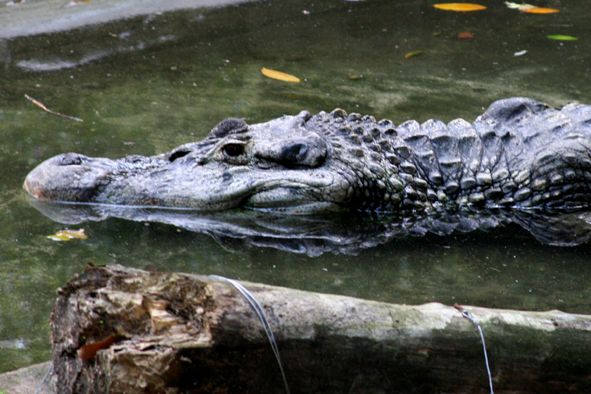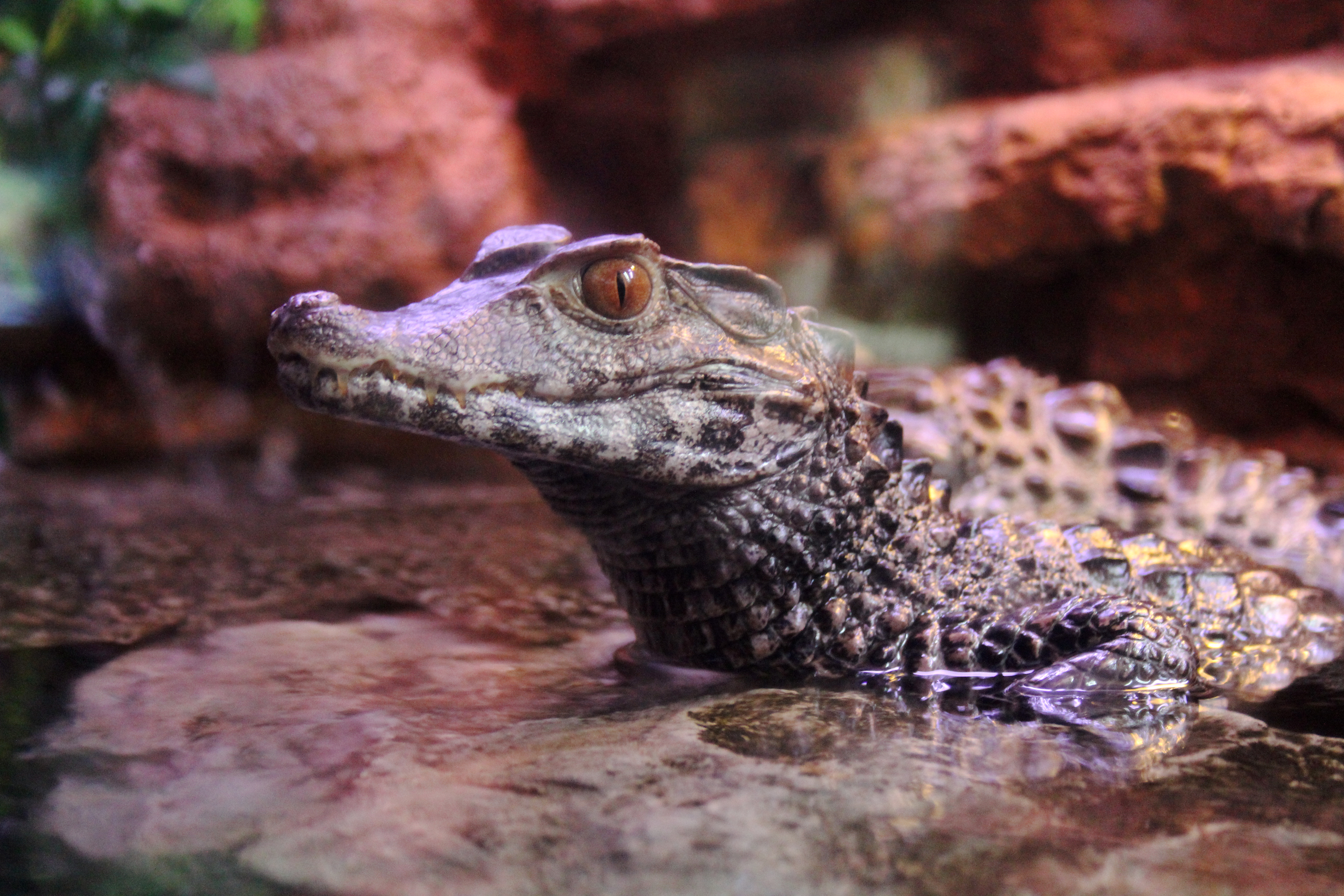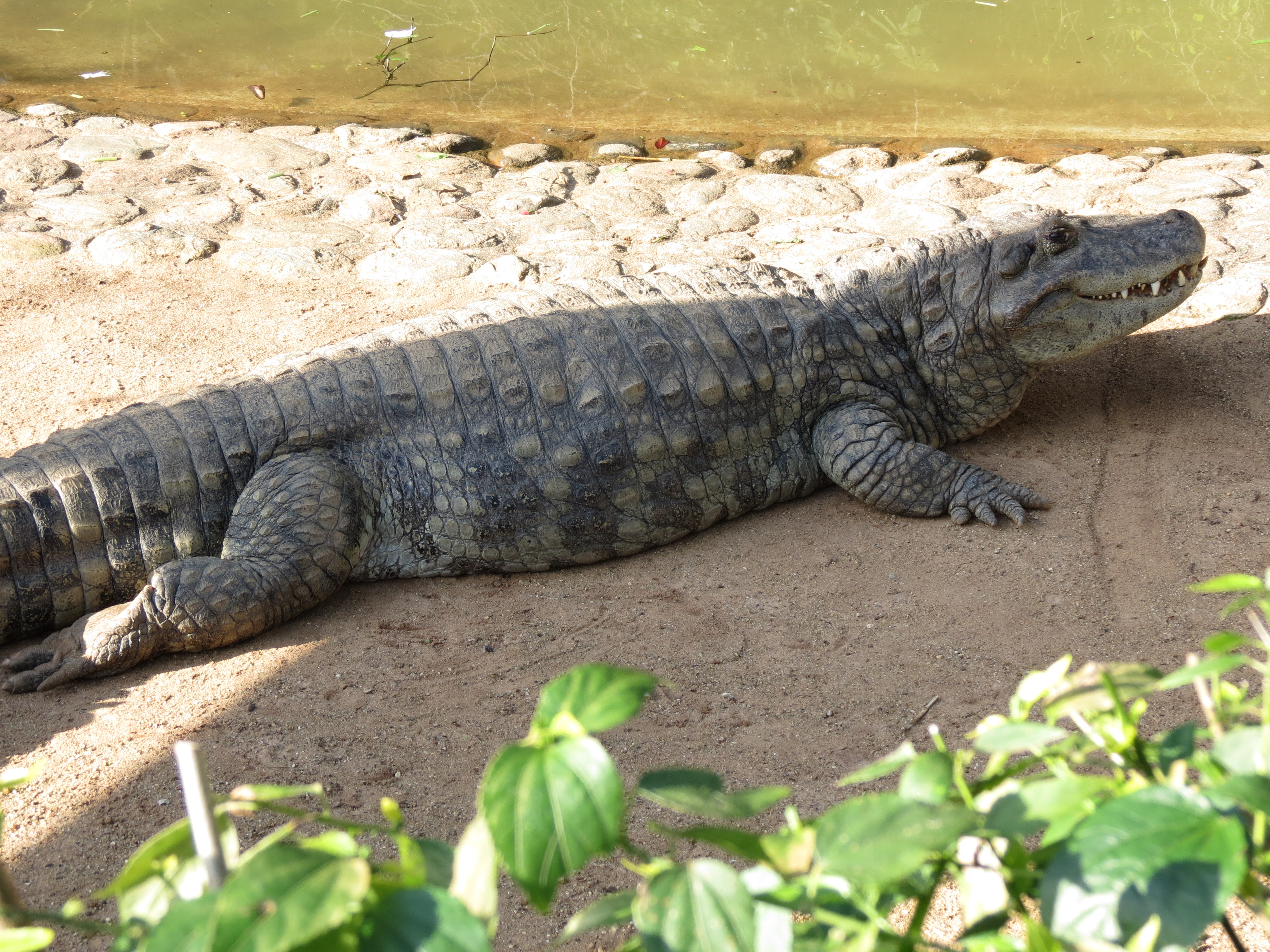Caimanines on:
[Wikipedia]
[Google]
[Amazon]
A caiman (also cayman as a variant spelling) is an alligatorid belonging to the 





subfamily
In biological classification, a subfamily (Latin: ', plural ') is an auxiliary (intermediate) taxonomic rank, next below family but more inclusive than genus. Standard nomenclature rules end subfamily botanical names with "-oideae", and zoologi ...
Caimaninae, one of two primary lineages within the Alligatoridae family, the other being alligators. Caimans inhabit Mexico, Central
Central is an adjective usually referring to being in the center of some place or (mathematical) object.
Central may also refer to:
Directions and generalised locations
* Central Africa, a region in the centre of Africa continent, also known as ...
and South America from marshes and swamps to mangrove rivers and lakes. They have scaly skin and live a fairly nocturnal existence. They are relatively small-sized crocodilians with an average maximum weight of depending on species, with the exception of the black caiman
The black caiman (''Melanosuchus niger'') is a species of large crocodilian and is the largest species of the family Alligatoridae. It is a carnivorous reptile that lives along slow-moving rivers, lakes, seasonally flooded savannas of the Amazon ...
(''Melanosuchus niger''), which can grow more than in length and weigh in excess of 1,000 kg (2,200 Ib). The black caiman is the largest caiman species in the world and is found in the slow-moving rivers and lakes that surround the Amazon basin. The smallest species is the Cuvier's dwarf caiman (''Paleosuchus palpebrosus''), which grows to long. There are six different species of caiman found throughout the watery jungle habitats of Central and Southern America. The average length for most of the other caiman species is about long.
Caimans are distinguished from alligators, their closest relatives, by a few defining features: a lack of a bony septum between the nostrils, ventral armor composed of overlapping bony scutes formed from two parts united by a suture, and longer and sharper teeth than alligators, plus caimans tend to be more agile and crocodile-like in their movements. The calcium rivets on caiman scales make their hides stiffer and thus less valuable than those of alligators and crocodiles, both of which have a similar appearance, but are more pliable.
Several extinct forms are known, including '' Purussaurus'', a giant Miocene genus that grew to and the equally large '' Mourasuchus'', which had a wide duck-like snout.




Behavior
Caimans are predators and, like alligators and crocodiles, their diet largely consists of fish. Caimans also hunt insects, birds, and small mammals and reptiles. Due to the large size and ferocious nature of caimans, they have few natural predators within their environments. Humans are the main predators of caimans, as they have been hunted for their meat and skin.Jaguar
The jaguar (''Panthera onca'') is a large cat species and the only living member of the genus '' Panthera'' native to the Americas. With a body length of up to and a weight of up to , it is the largest cat species in the Americas and the th ...
s, anacondas and crocodiles are the only other predators of caimans, but they usually prey on the smaller specimens. During summer or droughts, caimans may dig a burrow and go into a form of summer hibernation called aestivation
Aestivation ( la, aestas (summer); also spelled estivation in American English) is a state of animal dormancy, similar to hibernation, although taking place in the summer rather than the winter. Aestivation is characterized by inactivity and ...
.
Female caimans build a large nest in which to lay their eggs. These nests can be more than wide. Female caimans lay between 10 and 50 eggs, which hatch within about six weeks. Once they have hatched, the mother caiman takes her young to a shallow pool of water, where they can learn how to hunt and swim.
Phylogeny
Caimaninae is cladistically defined as ''Caiman crocodylus'' (the spectacled caiman) and all species closer to it than to ''Alligator mississippiensis'' (the American alligator). This is a stem-based definition for caimaninae, and means that it includes morebasal
Basal or basilar is a term meaning ''base'', ''bottom'', or ''minimum''.
Science
* Basal (anatomy), an anatomical term of location for features associated with the base of an organism or structure
* Basal (medicine), a minimal level that is nec ...
extinct
Extinction is the termination of a kind of organism or of a group of kinds (taxon), usually a species. The moment of extinction is generally considered to be the death of the last individual of the species, although the capacity to breed and ...
caimanine ancestors that are more closely related to living caimans than to alligators.
Below is a cladogram showing the phylogeny of Caimaninae, modified from Hastings ''et al.'' (2013).
Taxonomy
* Subfamily Caimaninae ** Genus †'' Acresuchus'' **Genus †''Brachychampsa
''Brachychampsa'' is an extinct genus of alligatoroid, possibly a basal caiman. Specimens have been reported from New Mexico, Colorado, Wyoming, Montana, North and South Dakota, New Jersey, and Saskatchewan, though only those from Montana, Utah, ...
''
** Genus †''Bottosaurus
''Bottosaurus'' is an extinct genus of alligatorid from the Late Cretaceous-Early Paleocene of New Jersey, Texas, and possibly North Carolina and South Carolina. Two species are currently accepted, with a third requiring re-evaluation.
Taxonomy ...
''
** Genus †
A dagger, obelisk, or obelus is a typographical mark that usually indicates a footnote if an asterisk has already been used. The symbol is also used to indicate death (of people) or extinction (of species). It is one of the modern descendan ...
''Centenariosuchus
''Centenariosuchus'' is an extinct genus of caimanine crocodylian known from the Miocene of the Panama Canal Zone of Panama.Chinatichampsus
''Chinatichampsus'' is an extinct genus of crocodilian from the Devil's Graveyard Formation of Texas, specifically the Dalquest Desert Research Site. It is a monotypic genus, containing only the type species ''Chintanichampsus wilsonorum''. A ...
''
** Genus †''Protocaiman
''Protocaiman'' is a caimanine genus of crocodylian first described in 2018. The type species ''Protocaiman peligrensis'' was discovered in Argentina's Salamanca Formation, and lived in Patagonia during the Paleocene epoch.
References
...
''
** Genus †''Kuttanacaiman
''Kuttanacaiman'' is a monotypic genus of extinct caiman represented by the type species ''Kuttanacaiman iquitosensis''. ''Kuttanacaiman'' lived in what is now the Amazon basin during the Middle Miocene, approximately 13 million years ago (Ma). ...
''
** Genus †'' Gnatusuchus''
** Genus †''Culebrasuchus
''Culebrasuchus'' is an extinct, monotypic genus of caiman alligatorid known from the Early to Middle Miocene (Hemingfordian) of the Panama Canal Zone of Panama. It contains a single species, ''Culebrasuchus mesoamericanus''.
Discovery
''Cule ...
''
** Genus †'' Eocaiman''
** Genus †'' Globidentosuchus''
** Genus '' Paleosuchus''
*** ''P. palpebrosus'', Cuvier's dwarf caiman
*** ''P. trigonatus'', smooth-fronted caiman
** Genus †'' Purussaurus''
** Genus †'' Mourasuchus''
** Genus †'' Necrosuchus''
** Genus †''Orthogenysuchus
''Orthogenysuchus'' is an extinct genus of caimanine alligatorids. Fossils have been found from the Wasatch Beds of the Willwood Formation of Wyoming, deposited during the early Eocene. The type species is ''O. olseni''. The holotype, known as ...
''
** Genus †''Tsoabichi
''Tsoabichi'' is an extinct genus of caimanine crocodylian. Fossils are known from the Green River Formation in Wyoming, and date back to the Ypresian stage of the Eocene (Wasatchian stage of North American age). The genus was named and describ ...
''
** Genus '' Caiman''
*** ''C. yacare'', yacare caiman
*** ''C. crocodilus'', spectacled caiman
**** ''C. c. crocodilus'', spectacled caiman
**** ''C. c. apaporiensis'', Rio Apaporis caiman
**** ''C. c. fuscus'', Brown caiman
*** †''C. lutescens''
*** †'' C. venezuelensis''
*** †'' C. wannlangstoni''
*** †'' C. brevirostris''
*** ''C. latirostris'', broad-snouted caiman
The broad-snouted caiman (''Caiman latirostris'') is a crocodilian in the family Alligatoridae found in eastern and central South America, including southeastern Brazil, northern Argentina, Uruguay, Paraguay, and Bolivia. It is found mostly in fr ...
** Genus ''Melanosuchus''
*** †'' M. fisheri''
*** ''M. niger'', black caiman
The black caiman (''Melanosuchus niger'') is a species of large crocodilian and is the largest species of the family Alligatoridae. It is a carnivorous reptile that lives along slow-moving rivers, lakes, seasonally flooded savannas of the Amazon ...
References
{{Taxonbar, from=Q478759 Alligatoridae Selandian first appearances Extant Selandian first appearances de:Kaimane mk:Кајмани